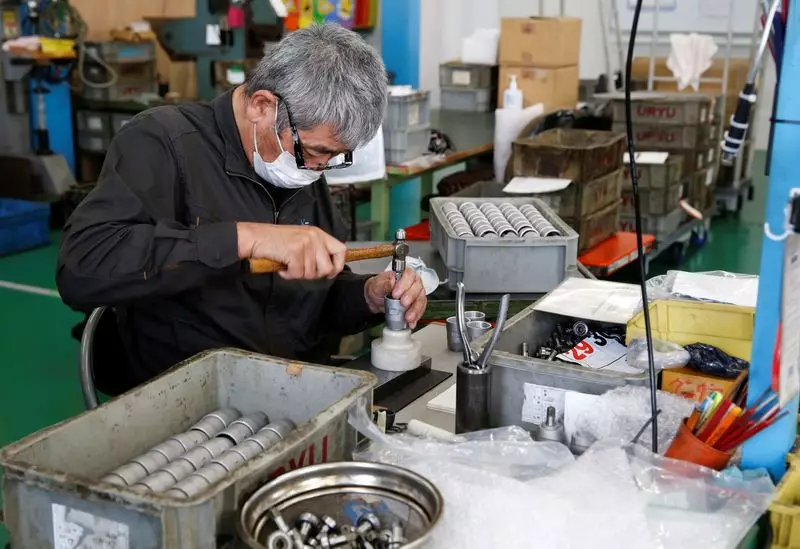Japan’s economic landscape is experiencing a mixed outlook, as revealed by a recent central bank survey. While big manufacturers are feeling optimistic with confidence hitting a more than two-year high, the service-sector mood has soured due to rising costs driven by the weak yen. This dichotomy in sentiment poses a challenge for the Bank of Japan in making decisions regarding interest rates and economic forecasts.
The findings from the survey, which preface the Bank of Japan’s upcoming policy meeting, complicate the central bank’s decision-making process. Despite an improvement in business sentiment among manufacturers, particularly in passing on rising costs through price hikes, the outlook for non-manufacturers remains uncertain. As such, the data does not provide a clear case for an early rate hike, according to analysts.
While corporate inflation expectations have risen slightly, keeping market expectations alive for a near-term rate hike, the sentiment among service-sector firms is less optimistic. Rising labor costs and stubbornly high imported raw material prices have impacted non-manufacturers, leading to a decline in sentiment for the first time in two years. This divergence in outlook between manufacturers and non-manufacturers reflects the broader challenges facing the Japanese economy.
The tankan survey also revealed long-term corporate inflation expectations, with companies projecting inflation to reach 2.3% three years from now and 2.2% five years ahead. However, a revision to historical data showed that Japan’s real GDP shrank more than previously reported in the first quarter, indicating underlying weaknesses in the economy. This revision is likely to impact the Bank of Japan’s quarterly growth and price forecasts, further complicating its policy decisions.
The Bank of Japan’s decision to end eight years of negative interest rates and other radical monetary stimulus in March signaled a transition in its policy approach. While there are expectations for the central bank to raise interest rates again this year, the timing remains uncertain. BOJ Governor Kazuo Ueda has emphasized the need for evidence that underlying inflation will durably meet the 2% target before further rate hikes are implemented. Despite inflation remaining above target for two years, Japan’s fragile economic recovery presents challenges for the Bank of Japan’s rate hike path.
Japan’s economic outlook is characterized by a mix of optimism among manufacturers and concerns in the service sector. The diverging sentiments revealed in the tankan survey underscore the challenges facing the Bank of Japan in navigating interest rate decisions and economic forecasts. While inflation expectations and historical data revisions provide additional context, the path to sustained economic recovery remains uncertain in the face of global economic uncertainties.

